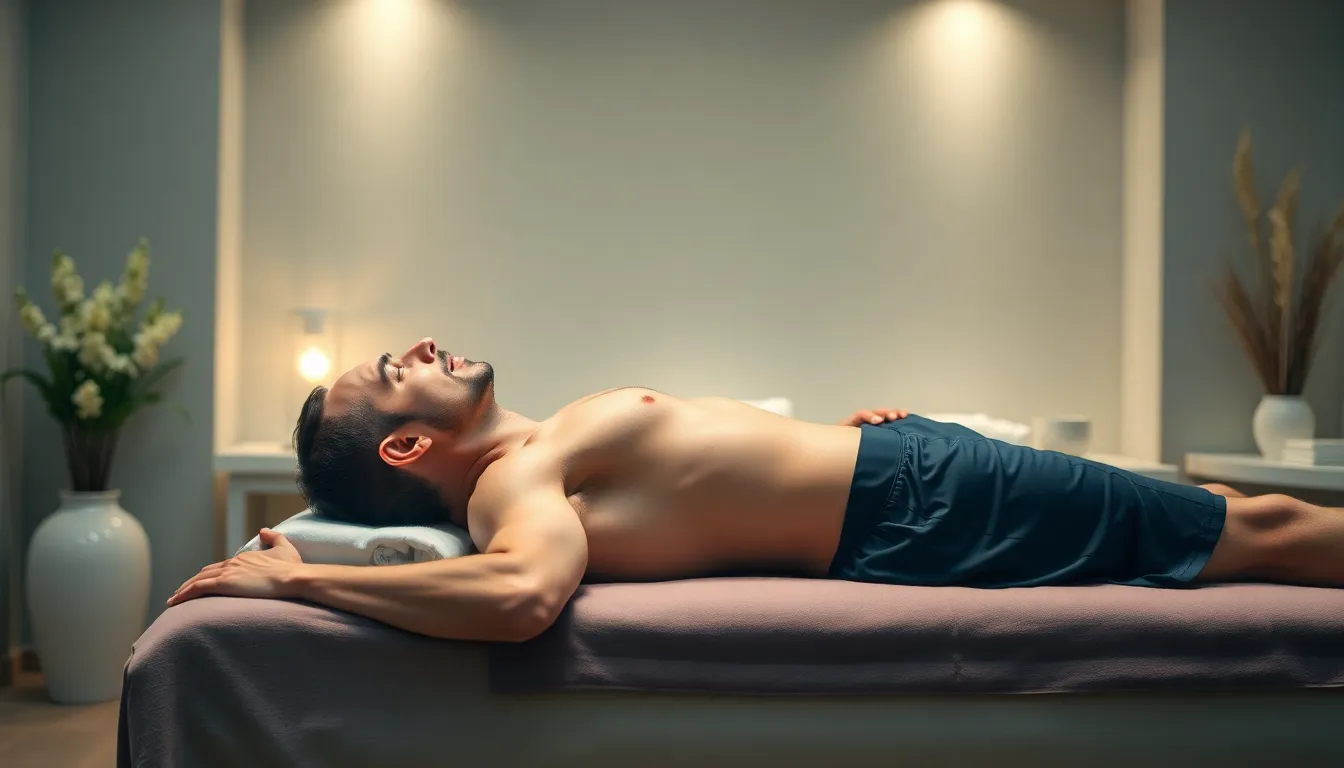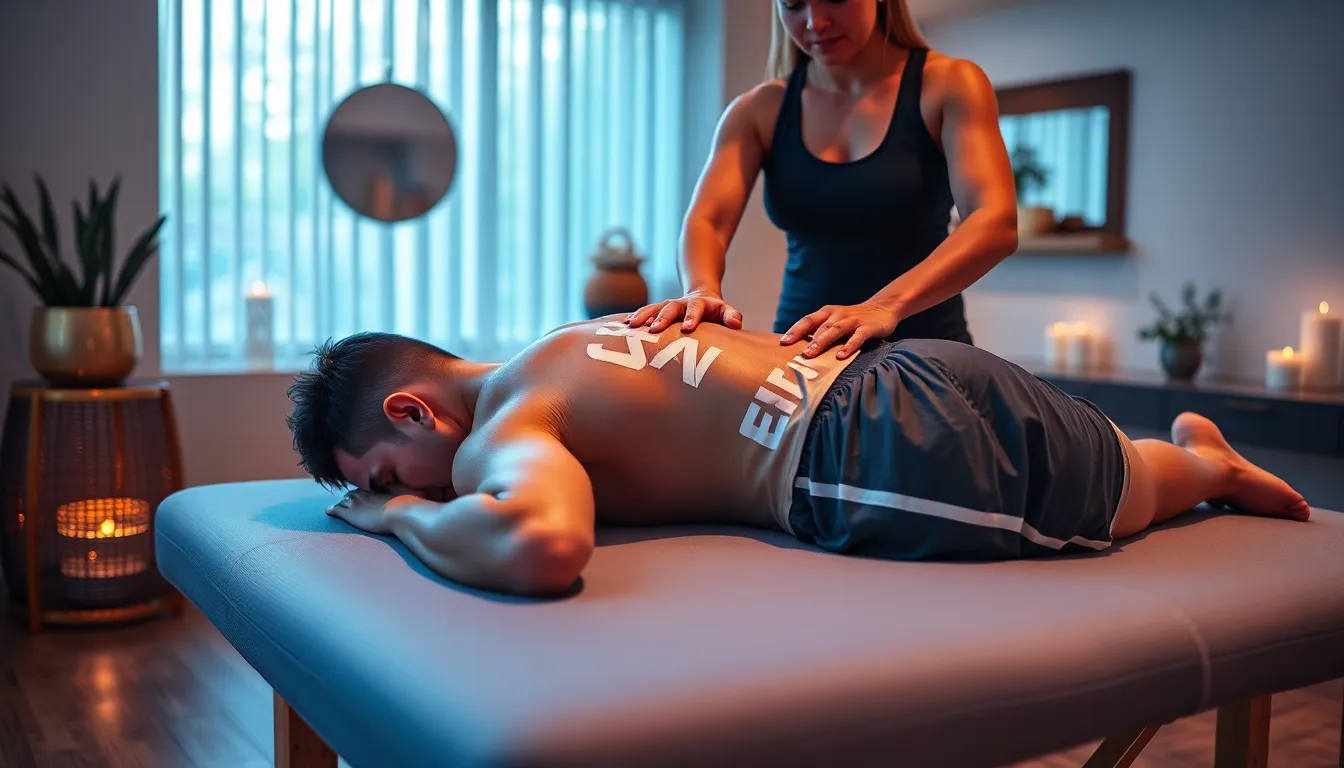Table of Contents
ToggleIn today’s fast-paced world, balancing fitness and wellness can feel like a daunting task. Many people are turning to massage therapy as a powerful tool to enhance their fitness routines and overall well-being. This holistic approach not only promotes relaxation but also aids in muscle recovery, flexibility, and injury prevention.
Massage therapy fitness combines the benefits of physical activity with therapeutic techniques to create a comprehensive wellness experience. It helps athletes and fitness enthusiasts alike optimize their performance while minimizing the risk of burnout. By integrating massage into their fitness regimen, individuals can unlock their full potential and achieve their health goals more effectively.
Understanding Massage Therapy Fitness
Massage therapy fitness integrates therapeutic massage techniques with physical activity to enhance well-being and performance. This approach focuses on recovery, flexibility, and injury prevention, benefiting individuals engaged in fitness routines.
Definition of Massage Therapy
Massage therapy involves manipulating soft tissues to promote relaxation and healing. Techniques include kneading, rubbing, and applying pressure to muscles and fascia. Typically performed by licensed therapists, massage therapy targets specific areas of discomfort, enhances blood flow, and encourages overall physical and mental health.
Importance of Fitness in Massage Therapy
Fitness plays a crucial role in maximizing the benefits of massage therapy. Regular physical activity improves muscle tone, endurance, and flexibility, which augment massage therapy outcomes. Enhanced circulation from both fitness and massage increases nutrient delivery and waste removal in tissues. Additionally, active individuals experience reduced muscle soreness and tension, facilitating faster recovery post-exercise.
Benefits of Massage Therapy Fitness

Massage therapy enhances both physical and mental well-being, making it a valuable addition to fitness routines. The integration of massage techniques promotes recovery, flexibility, and overall health.
Physical Benefits
- Muscle Recovery: Massage therapy accelerates muscle recovery by increasing blood circulation, which delivers essential nutrients to tissues and helps remove metabolic waste. This process reduces muscle soreness and enhances post-exercise recovery time.
- Improved Flexibility: Regular massage promotes muscle relaxation and elongation, allowing for improved flexibility. Increased range of motion enhances performance in physical activities and decreases the likelihood of strains or sprains.
- Pain Relief: Targeted massage techniques alleviate localized pain and reduce tension in muscles and connective tissues. This benefit is particularly valuable for athletes who push their bodies to the limit.
- Injury Prevention: By addressing muscle tightness and imbalances, massage therapy helps to prevent injuries. It prepares muscles and joints for physical stress, lowering the risk of strains.
- Enhanced Performance: Increased blood flow and flexibility achieved through massage contribute to athletic performance. Athletes benefit from improved coordination and efficiency in their movements.
Mental Benefits
- Stress Reduction: Massage therapy effectively reduces stress by lowering cortisol levels in the body. This reduction fosters a sense of relaxation and well-being, essential for mental health.
- Enhanced Focus: The calming effects of massage therapy lead to improved concentration and mental clarity. Athletes often experience heightened focus during workouts and competitions following massage sessions.
- Improved Sleep Quality: Regular massage promotes deeper sleep by reducing tension and fostering relaxation. Quality sleep is crucial for recovery and overall fitness success.
- Increased Body Awareness: Massage encourages individuals to connect with their bodies, improving proprioception. Enhanced body awareness aids in recognizing areas of tension or pain that may require attention.
- Mood Enhancement: Massage therapy releases endorphins, which can lead to an improved mood. By positively influencing mental well-being, massage therapy supports a more enjoyable fitness journey.
Types of Massage Therapy for Fitness
Different types of massage therapy cater to various fitness needs. Each method emphasizes specific techniques that target different muscle groups and facilitate recovery.
Swedish Massage
Swedish massage utilizes long, flowing strokes to promote relaxation and improve circulation. This technique helps to relieve tension in muscles and enhance overall flexibility. Athletes often benefit from the gentle pressure that promotes muscle relaxation without pain. Regular sessions can lead to improved muscle tone, increased range of motion, and overall stress reduction, making it ideal for pre- and post-workout routines.
Deep Tissue Massage
Deep tissue massage focuses on realigning deeper layers of muscles and connective tissue. This method uses slow strokes and concentrated pressure, addressing chronic pain and muscle tension. Individuals engaging in intense workouts find this technique beneficial for breaking up scar tissue and alleviating muscle soreness. Deep tissue massage enhances recovery by improving blood flow and helping to release toxins from the muscles, resulting in better performance and reduced injury risk.
Sports Massage
Sports massage combines techniques from both Swedish and deep tissue massages, specifically designed for athletes. This type of massage targets muscle groups that are highly used in athletic activities. It speeds up recovery, prevents injury, and improves flexibility and performance. Regular sports massage sessions help maintain muscle health, ensure optimal recovery times, and prepare athletes for upcoming events, enhancing their physical capabilities.
Incorporating Massage Therapy into Your Fitness Routine
Integrating massage therapy into a fitness routine offers significant benefits that can enhance overall performance and recovery. Both pre- and post-workout massage techniques serve specific purposes, helping individuals maximize their fitness goals.
Pre-Workout Massage
Pre-workout massage prepares the body for physical activity by enhancing circulation and increasing muscle temperature. This technique focuses on loosening tight muscles, promoting flexibility, and improving range of motion. Specific strokes, such as effleurage and percussion, stimulate blood flow and deliver oxygen to muscles, reducing the risk of injury during exercise. Additionally, this type of massage can elevate mental focus and reduce performance anxiety. Research indicates that just 10–15 minutes of pre-workout massage can significantly improve athletic performance by ensuring muscles are ready for action.
Post-Workout Recovery
Post-workout recovery massage accelerates muscle healing and alleviates soreness. This technique primarily concentrates on flushing out metabolic waste products, which accumulate during intense physical activity. Deep tissue strokes and trigger point therapies are effective in addressing muscle knots and tension built up during workouts. Regular post-workout sessions improve overall flexibility and reduce recovery time, allowing individuals to return to their fitness routines quickly. Studies show that incorporating post-exercise massage can lead to a decrease in delayed onset muscle soreness (DOMS), enhancing overall exercise adherence and performance.
Incorporating both pre- and post-workout massages into a fitness routine ensures optimal muscle function, reduces soreness, and increases overall efficiency.
Choosing the Right Massage Therapist
Selecting a qualified massage therapist greatly impacts the effectiveness of massage therapy in fitness routines. Consider evaluating credentials, qualifications, and specializations to find the best fit.
Credentials and Qualifications
Checking credentials is essential. Look for therapists certified by recognized organizations, such as the National Certification Board for Therapeutic Massage & Bodywork (NCBTMB) or state-regulated boards. Verify their educational background, ensuring they completed a comprehensive massage therapy program. Experience matters too; therapists with additional hours in the field demonstrate practical knowledge. Also, inquire about their ongoing education and training, as the best therapists frequently update their skills with the latest techniques and trends in the industry.
Specializations to Look For
Identifying a therapist’s specialization aligns skills with specific fitness goals. For athletes, therapists specialized in sports massage are ideal, as they focus on injury prevention and performance enhancement. For individuals seeking relaxation and recovery, those proficient in Swedish massage offer techniques that promote muscle relaxation and improve circulation. Couples with chronic pain may benefit from therapists trained in deep tissue or trigger point therapy, which addresses tension in deeper muscle layers. Matching a therapist’s specialization to personal fitness activities and needs ensures a more tailored and effective massage experience.
Incorporating massage therapy into fitness routines offers a holistic approach to wellness. By enhancing relaxation and promoting muscle recovery, it plays a crucial role in optimizing performance. Athletes and fitness enthusiasts alike can benefit from the tailored techniques that address specific needs.
Choosing the right massage therapist is essential for maximizing these benefits. With the right guidance and regular sessions, individuals can experience improved flexibility, reduced soreness, and enhanced overall health. Embracing both fitness and massage therapy creates a powerful synergy that supports long-term wellness and achievement of fitness goals.




